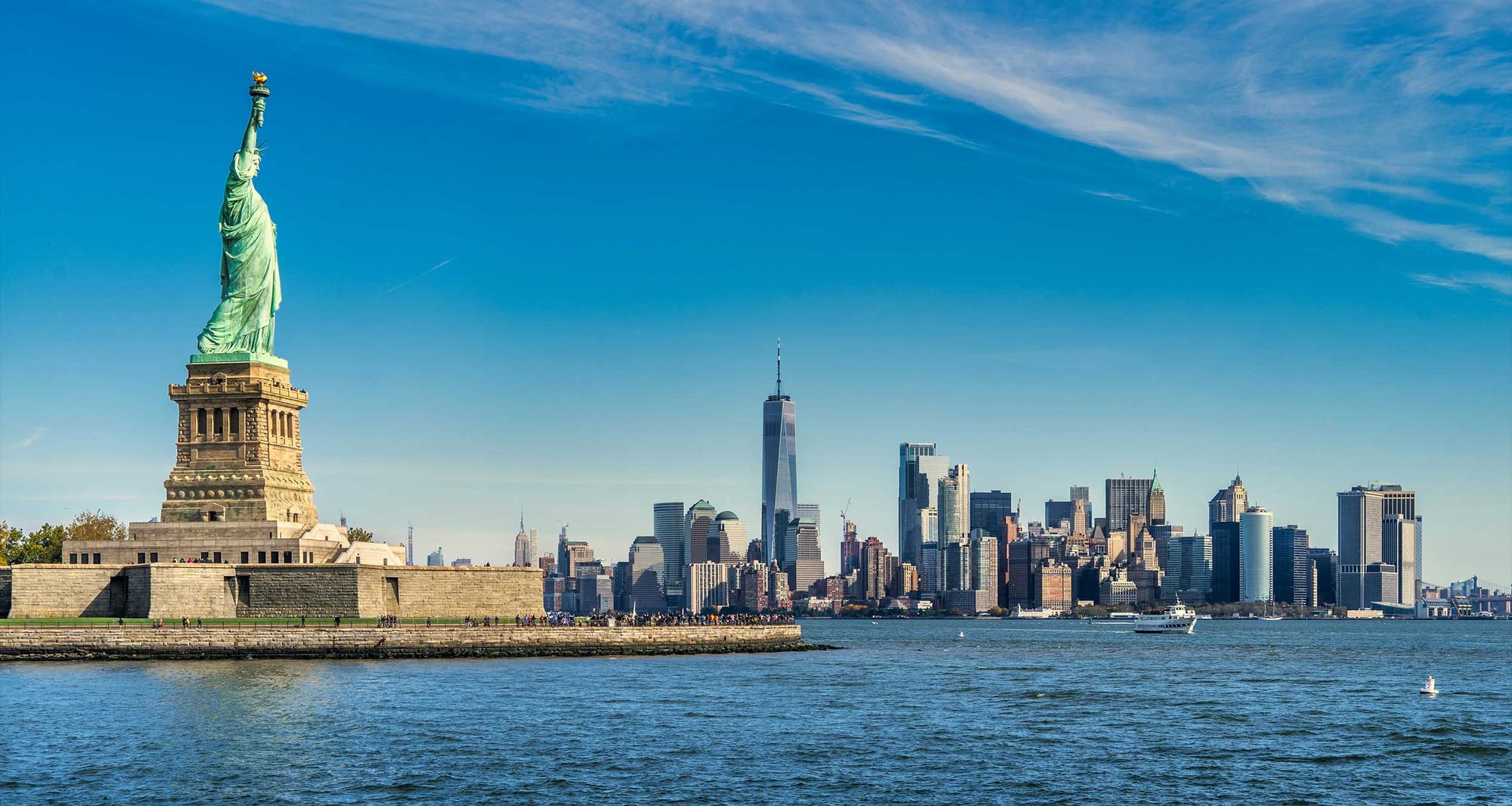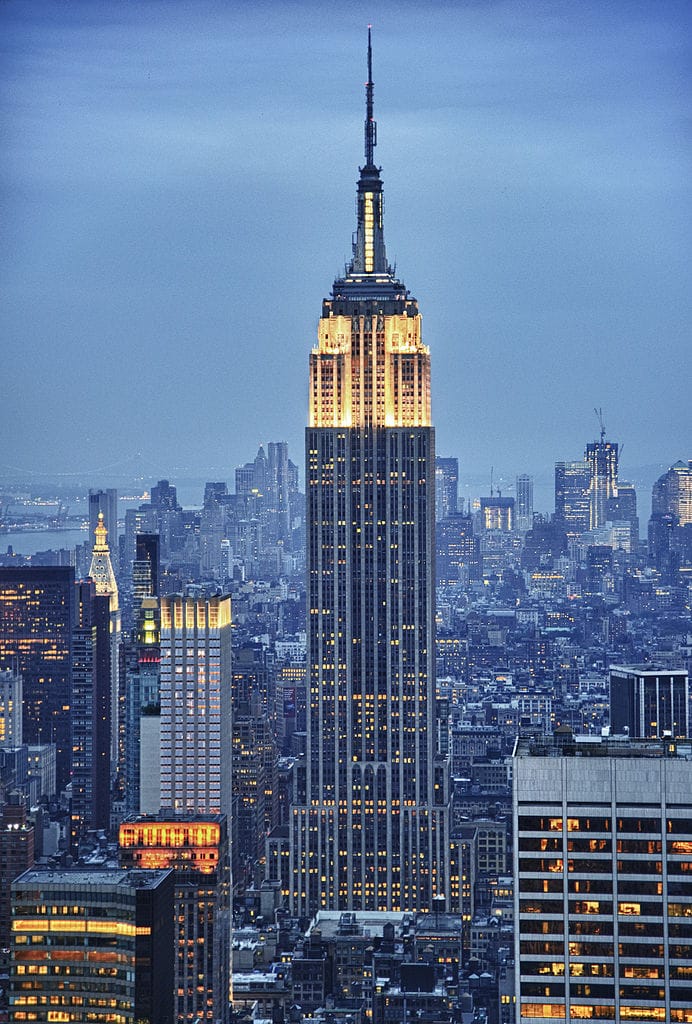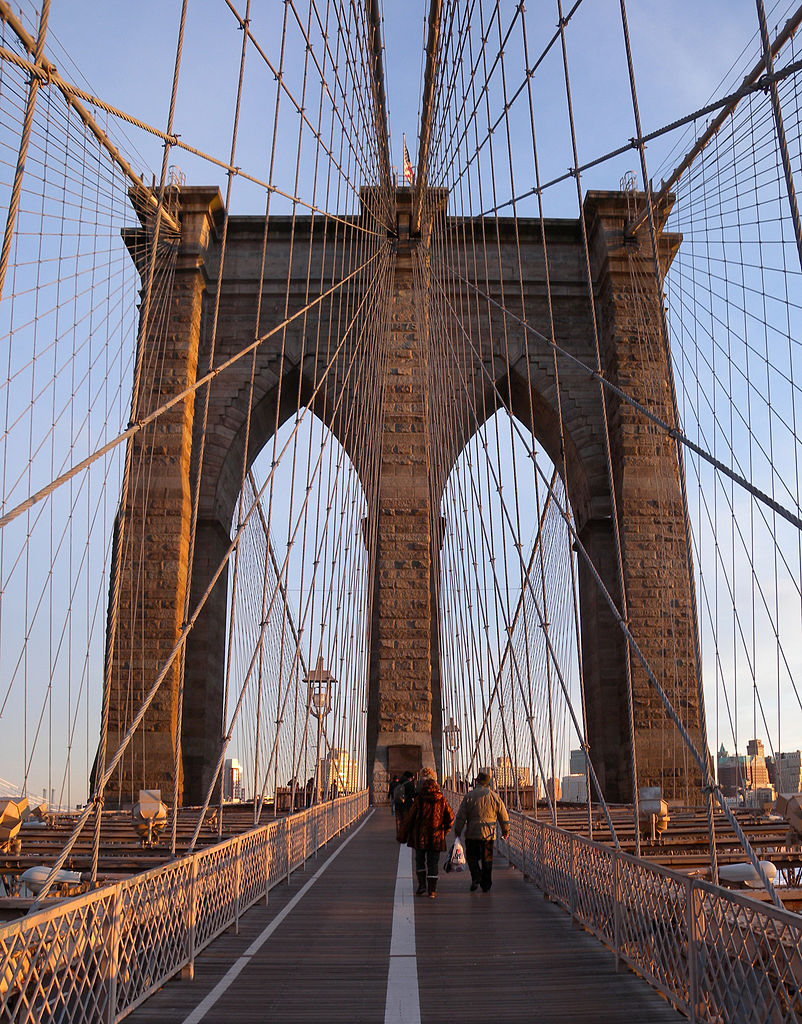
The majority of New York City’s must-see attractions are accessible and wheelchair friendly. First time visitors to NYC should purchase the City Pass, which provides admission to six of the city’s most popular attractions at a 41% discount. Attractions included in the pass are marked with a link to purchase it (I will earn a small commission, at no cost to you). Beyond the CityPass attractions, New York is a large city and there is still much more to see and do.
Note: For each of the below-listed attractions, the nearest MTA Subway station is listed. All listed stations are within one mile of the attraction. If no station is listed, the distance to the nearest accessible station is greater than one mile. Be aware that not all lines/trains at an accessible station will be accessible, so I have listed only the specific trains which can be reached in a wheelchair. Because construction and track maintenance are ever-present in New York City, please share any changes you notice in the comments section at the bottom of this page. And be sure to read my guide to wheelchair accessible public transport in New York City.
Empire State Building (CityPass)

Standing 1,454-feet tall and reaching 102 stories into the Manhattan skyline, the Empire State Building is representative of the city’s historic grandeur. Construction started in 1929 and was completed in 1931. A U.S. National Historic Landmark, it reigned as the world’s tallest building until 1970. The Empire State Building is among the most popular tourist attractions in New York City. The building features two observation decks, one on the 86th and another on the 102nd floor. Revenues from tickets sold to the observation decks account for more annual revenue than the rent paid by the building’s office space tenants.
Tourists who purchase the New York CityPASS will receive admission to the 86th floor observation deck, a $32.00 value. The CityPASS allows purchasers the opportunity to visit in both the daytime and at night, with free same-day readmission at night. This makes for a total value of $64.00, as tickets purchased directly through the Empire State Building do not permit multiple admissions. The CityPASS ticket can be upgraded to access the 102nd floor for an additional $20. In order to skip the sometimes long lines, visitors will need to purchase the $23 per person Express Pass. Both the 86th and 102nd observation decks are wheelchair accessible. The 86th floor features lowered walls and sightseeing binoculars to accommodate visitors in wheelchairs. The 102nd floor has a higher wall that may be difficult for wheelers to see over. Accessible restroom facilities are available on the 86th floor. The Empire State Building is in full compliance with the Americans with Disabilities Act. For more information, visit citypass.com/new-york.
Central Park
Central Park initially opened in 1857 and now occupies 843 acres in central Manhattan. The park is home to many activities and attractions and is a stunning green space one would not expect to see amidst one of the world’s largest cities. With paved walkways throughout, the park is easily accessible and grants wheelchair users access to amazing scenery. Numerous lakes/ponds, gardens, sculptures and statues are spread across the park’s grounds. Street food is available at every entrance and concession stands and restaurants are present within the park grounds. Wildlife is abundant, with flora, fauna and birds visible everywhere.

Due to the large size of Central Park, there are many MTA Subway stations around its perimeter. The following are a list of wheelchair accessible subway stations within three blocks of Central Park:
- 96th Street Station – Close proximity to Central Park’s recreation fields, tennis courts and the Jacqueline Kennedy Onassis Reservoir. Served by trains 1, 2 and 3.
- 72nd Street Station – Close proximity to The Lake, Strawberry Fields, Wagner Cove and the Bethesda Fountain. Served by trains 1, 2 and 3.
- 59th Street – Columbus Circle Station – Directly at the park entrance at the intersection of Broadway, Central Park South/59th Street and Central Park West. Close proximity to The Duck Pond. Served by trains 1, 2, A, B, C and D.
Statue of Liberty & Ellis Island (CityPass)
Come experience the beauty and history of the Statue of Liberty National Monument and the Ellis Island Immigration Museum, located in New York Harbor! You’ll be surprised and impressed by how much you’ll learn and see at these world-renowned sites. Statue Cruises is the only concessioner authorized by the National Park Service, Department of the Interior, to serve the public at the Statue of Liberty National Monument and Ellis Island.
Valid for Landmark Cruise, Harbor Lights Cruise, Liberty Cruise or The Beast Speedboat Ride. You will enjoy magnificent views of the world’s premier skyline with up-close views of the Statue of Liberty, Wall Street, The United Nations and much more. Our professional tour guides will share the legends and lore behind our great city. Upgrade to a Full Island Cruise and see over 101 NYC sights. Circle Line is the ONLY cruise which goes around the entire island.
World Trade Center 9/11 Memorial & Museum (CityPASS)
The National September 11 Memorial & Museum sits on the very spot where the World Trade Center’s Twin Towers stood until the terrorist attack of September 11, 2001. Two waterfalls & pools sit on the ground precisely where the towers stood. The pools are lined with 76 bronze plates listing the names of the 2,977 victims of the 9/11 attacks in New York, Arlington and Pennsylvania. The plates also memorialize the names of the six killed in the February 1993 World Trade Center bombing.
A young callery pear tree, badly burned and pulled from the rubble following the attack, was replanted at the memorial in 2010. Now referred to as the “Survivor Tree,” it has become a symbol of hope and rebirth.
The 9/11 Museum, opened in May 2014, comprises 110,000 square feet beneath Ground Zero and houses exhibits consisting over 23,000 photographs, 10,000 artifacts including pieces of all seven WTC buildings, recordings of 9-1-1 emergency calls, oral histories and video of the day’s turmoil and events. The museum and memorial grounds are entirely wheelchair accessible.
Nearest accessible MTA Subway: Cortlandt Street Station, BMT Broadway Line – N & R trains
One World Observatory in the Freedom Tower
The One World Observatory is located on floors 100, 101 and 102 of the World Trade Center, or “Freedom Tower.” The experience provides spectacular views of Manhattan in both day and night. The building is proof that New York City rose again from the ashes produced by the terrorist attacks of September 11, 2001.
The observatory, which opened in May 2015, is a beacon of hope for both the city and nation. All three levels are fully accessible to wheelchairs. Tickets are priced at $32.00 for adults and $30.00 for seniors age 65+. For more information, read the complete review of my visit on the observatory’s second day of operation.
Nearest accessible MTA Subway: Cortlandt Street Station, BMT Broadway Line – N & R trains
Times Square
Often referred to as “The Center of the World,” Times Square is perhaps the most recognized attraction in New York City. Located at the intersection of Broadway and 7th Avenue, Times Square is a major commercial intersection and neighborhood which stretches from West 42nd to West 47th Street. The ultimate photo opportunity, Times Square attracts tourists from all over the world and is lined with shops and flashing billboards.
Nearest MTA Subway: Times Square – 42nd Street/Port Authority Bus Terminal station, trains 1, 2, 3, 7, <7>, A, C, E, N, Q, and R
Radio City Music Hall
A landmark in Manhattan and often called the Showplace of the Nation, Radio City Music Hall is an entertainment venue and concert hall located in Rockefeller Center. Opened in 1932, Radio City has hosted countless acts, the Grammy Awards, the NFL Draft and more at different times throughout its history. Today, visitors to the city may catch a show or simply snap a photo of the Hall’s iconic facade.
Nearest MTA Subway: 47th-50th Streets – Rockefeller Center Station, trains B, D, F and M
MoMA — The Museum of Modern Art
The Museum of Modern Art, located in Midtown Manhattan, has been called the most influential museum of modern art in the world. The museum displays a diverse collection of modern art, including works of architecture, drawing, painting, photography, prints and sculpture. The museum’s collection consists of more than 500,000 pieces, including more than 300,000 books and catalogs in its library. In 2013, the MoMA attracted more than 3 million visitors, making it the 13th most visited art museum in the world. Admission to the museum is available to adults for $25 and to seniors age 65+ for $18. The MoMA is fully accessible to wheelchairs and is in compliance with the ADA. Additional information on visiting the museum is available at moma.org.
Nearest MTA Subway: 0.3 miles from 47th-50th Streets – Rockefeller Center Station, trains B, D, F and M
American Museum of Natural History (CityPass)
Voted #1 attraction in New York City by Zagat Survey “U.S. Family Travel Guide”! Included with your ticket: Rose Center for Earth and Space and 45 permanent exhibition halls featuring world-renowned dioramas, the 94-foot-long blue whale, and dinosaur halls. Don’t miss features in the LeFrak IMAX theater, with screenings in spectacular Digital 3D and 2D film, or the stunning new Hayden Planetarium Space Show Dark Universe.
The Metropolitan Museum of Art (CityPass)
Opened in 1872, “The Met” is the largest museum of art in the United States and among the 10 largest in the world. There is approximately 2 million square feet of gallery space. The museum features artwork from six continents, spanning time periods from classical antiquity to modern art. The collection is impressive, including works produced by nearly all of the European masters. Architecture, armor, arms, books, costumes, decorative art, manuscripts, musical instruments, paintings, photographs, sculptures, textiles and more all have a place within the collection.
Given its appeal to diverse tastes, the Museum of Modern Art is the most visited in the United States and ranks third globally. The Museum is fully accessible to wheelchairs users and is ADA compliant. Elevators and accessible restrooms are located throughout the premises. Admission is provided based on a “pay what you wish” basis, but a minimum of $25 for adults and $17 for seniors age 65+ is strongly recommended. Admission to the museum, its special collections and its associated The Cloisters Museum and gardens is included as part of the New York CityPASS. For more information on The Metropolitan Museum of Art and the pass, visit citypass.com/new-york.
Broadway Theater Accessibility
SeatPlan have compiled accessibility information for 38 Broadway theaters to help visitors plan their trip to Wicked, Mean Girls and more. For full information on step-free access, wheelchair spaces and restroom facilities, visit SeatPlan’s New York page.
Little Italy
Little Italy is a neighborhood in lower Manhattan which was once home to a large population of Italian immigrants. Today, the neighborhood maintains the charm of old, but the population has transitioned to more of an American melting pot. Tourists still flock to Little Italy to experience the charm and dine at the few remaining Italian restaurants and delis. One such example is the wheelchair accessible Ferrara Bakery & Cafe (195 Grand Street), founded in 1892 and now operated by the family’s fifth generation of bakers.
Nearest MTA Subway: Canal Street Station, trains 4, 6 and <6>
Chinatown
The original New York City Chinatown, adjacent to Little Italy in Manhattan, is home to the largest Chinese population in the Western Hemisphere. Tourists come to Chinatown to taste a bit of Asia in Chinese restaurants, street markets, shops, grocery stores and more. This tourism is a major part of Chinatown’s neighborhood economy. Street vendors sell knock-off luxury handbags, watches, jewelry and clothing throughout, but the majority of this activity is centered on Canal Street.
Nearest MTA Subway: Canal Street Station, trains 4, 6 and <6>

Brooklyn Bridge
Built in 1883, the Brooklyn Bridge crosses the East River and connects the boroughs of Manhattan and Brooklyn. With a center pedestrian walkway and bicycle path, the 1.1 mile (1.8 km) bridge is accessible to users of wheelchairs. Designated a National Historic Landmark in 1966, the bridge has become one of the most photographed in the world.
Accessible entrances to the bridge’s pedestrian walkway are available on the Manhattan side at the end of Centre Street and from Brooklyn on either Tillary or Adams Streets. The nearest wheelchair accessible MTA Subway stations are:
- Fulton Street Station – 0.3 miles – Manhattan side. Served by Lines 2, 3, 4, 5, A, C, J and Z.
- Brooklyn Bridge – City Hall Station – 0.4 miles – Manhattan side. Served by Lines 4, 5, 6 and <6>.
- Jay Street – MetroTech Station – 0.8 miles – Brooklyn side. Served by Lines A, C, F, N and R.
Chrysler Building
Completed in May 1930, the Chrysler Building was the tallest building in the world until it was surpassed 11 months later by the Empire State Building. It is currently the fourth tallest building in New York City, behind One World Trade Center, the Empire State Building and the Bank of America Tower. Once home to the headquarters of the vehicle manufacturing company, the building now houses law firms, a private equity firm and a number of smaller corporations and foundations.
Nearest MTA Subway: Grand Central Terminal Station, trains 4, 5, 6, <6>, 7, <7> and S
Intrepid Sea, Air & Space Museum (CityPASS)
Opened in 1982 at Pier 86, the Intrepid Sea, Air & Space Museum is a military and maritime history museum. The museum holds a number of ships and airplanes, including the Space Shuttle Enterprise, the aircraft carrier USS Intrepid, the submarine USS Growler and a collection of military aircraft. Recently renovated, the museum is almost entirely accessible, with the exception of a few exhibits. For the history buff, aviation geek or military enthusiast, the Intrepid Museum will not disappoint.
Nearest MTA Subway: 0.9 miles from Times Square – 42nd Street/Port Authority Bus Terminal station, trains 1, 2, 3, 7, <7>, A, C, E, N, Q, and R
Battery Park
Named for the artillery that was once stationed there for defense, Battery Park is a 25 acre public park situated on the southern tip of manhattan Island. Facing New York Harbor, the park offers a picturesque view and is home to several memorials. The Sphere, a sculpture representing world peace, once stood at the World Trade Center, but was moved to Battery Park following the 9/11 attacks. The park also holds the East Coast Memorial, a tribute to those lost in World War II; the Hope Garden, dedicated to AIDS victims; the American Merchant Mariners’ Memorial and a Vietnam War Memorial.
Nearest MTA Subway: Bowling Green Station, trains 4 and 5
St. Patrick’s Cathedral
The Cathedral of St. Patrick is a Roman Catholic Church in the Archdiocese of New York and seat of Cardinal Timothy M. Dolan, Archbishop of New York. Built in the late 1800s, the cathedral is a landmark on New York City’s Fifth Avenue, standing across from the Rockefeller Center. Having recently undergone a $175 million restoration, the Cathedral has once again risen to its former beauty. The Cathedral Church’s sanctuary is wheelchair accessible, via a ramp to the left of the building.
Nearest MTA Subway: 4 blocks from Lexington Avenue/51st-53rd Street Station, trains 4, 6, <6>, E and M



